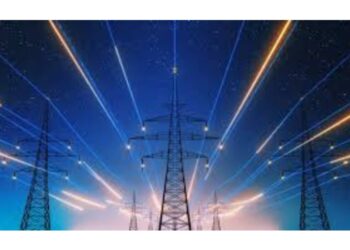Peak electricity demand during summer months poses a critical challenge to grid stability, particularly in regions experiencing intensified heatwaves and growing reliance on air conditioning. Solar photovoltaic (PV) systems offer substantial potential to offset this demand due to their alignment with daylight usage patterns. However, solar energy alone falls short of addressing peak demand that extends into the evening hours. This article explores the integration of solar energy with battery storage systems (BESS) as a comprehensive solution to mitigate summer peak loads, improve grid reliability, and reduce reliance on fossil-fuel-based peaking power plants. Drawing on recent empirical data and technological advancements, it assesses the techno-economic feasibility of this synergy and its implications for policy, infrastructure, and climate resilience.
To address this limitation, coupling solar photovoltaic (PV) generation with battery energy storage systems (BESS) presents a promising strategy. This integration not only facilitates load shifting but also enhances the dispatchability of renewable energy. This paper aims to evaluate the potential of solar-plus-storage systems in reducing summer peak loads, focusing on performance metrics, economic considerations, and deployment challenges.
Summer peak loads can cause significant stress on the electrical grid, leading to increased reliance on expensive and carbon-intensive peaker plants. In India, for instance, peak power demand reached 241 GW in June 2023, surpassing previous records (Ministry of Power, 2023). Similarly, California witnessed blackouts in the summer of 2020 due to high demand combined with limited dispatchable capacity.
Peak electricity demand in summer is often concentrated in urban residential and commercial areas due to air conditioning and refrigeration systems. These spikes lead to volatile wholesale electricity prices and increase the operational strain on transmission and distribution infrastructure.
Solar PV systems are most productive during the daytime, with peak generation occurring between 10:00 AM and 2:00 PM. This coincides with part—but not all—of the summer peak demand period. While solar installations can effectively reduce midday loads, they are less effective in addressing late-afternoon and early-evening peaks unless paired with storage.
Despite this limitation, solar PV adoption has grown significantly. As of 2023, global installed PV capacity surpassed 1,200 GW, with China, the United States, and India leading installations (International Energy Agency [IEA], 2023). However, maximizing the impact of solar generation during summer peak hours requires storage integration.
Battery Energy Storage Systems (BESS) can store excess solar energy generated during the day and discharge it during evening peaks. Lithium-ion batteries, due to their high energy density and declining costs, are the most commonly deployed technology. According to BloombergNEF (2023), the cost of lithium-ion battery packs has declined by over 80% since 2013, reaching $139/kWh in 2023. By storing solar energy, BESS addresses two critical challenges:
- Load shifting: Energy produced at noon can be used during peak demand in the evening.
- Grid support: BESS can provide frequency regulation, voltage support, and backup power during outages.
The Levelized Cost of Electricity (LCOE) for solar-plus-storage systems has become increasingly competitive. A 2023 report from Lazard estimates that the LCOE for utility-scale solar-plus-storage ranges between $60 to $110/MWh, depending on system size and location. These figures are now on par with or lower than the marginal cost of gas peaker plants.
Policy and Deployment Challenges
- High upfront capital costs – Although costs are falling, initial investments remain a barrier, especially for small-scale or residential applications.
- Regulatory uncertainty – Inconsistent policies regarding net metering, time-of-use pricing, and storage incentives hinder adoption.
- Grid integration issues – Interconnection delays, limited hosting capacity, and lack of standardization pose obstacles to widespread deployment.
By displacing fossil-fuel-based generation during peak hours, solar-plus-storage systems contribute to emission reductions and improved air quality. Moreover, they enhance energy resilience by offering backup power during grid outages, which are increasingly common due to climate-induced extreme weather events. Synergizing solar energy with battery storage offers a compelling solution to the perennial challenge of summer peak demand. As solar PV penetration increases globally, integrating BESS can unlock the full potential of renewable energy by ensuring dispatchability, grid stability, and economic efficiency. While technical and policy challenges remain, continued innovation, cost declines, and regulatory support are likely to make solar-plus-storage a central pillar of future energy systems.













